

Did you know that modern agriculture is being transformed by machinery that’s as powerful as it is unexpected? This change is not just a fad; it’s radically altering how we produce food across the globe.
With the global demand for food at an all-time high, the importance of understanding the latest innovations in agricultural machinery cannot be overstated. This knowledge is key to sustainable farming and food security, making it crucial right now.
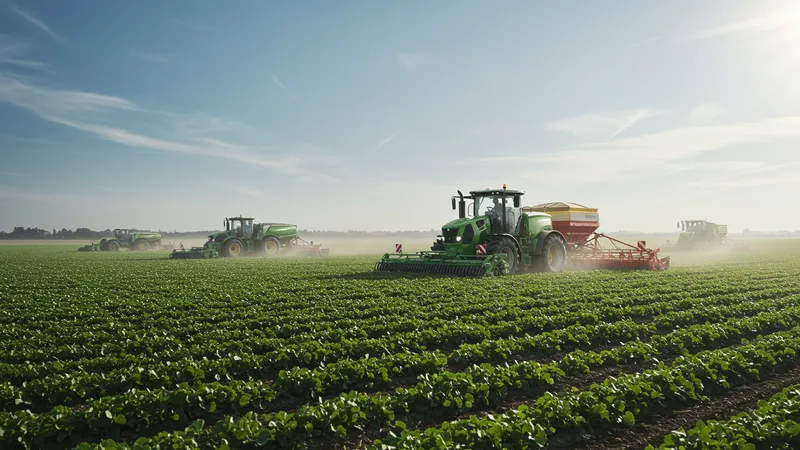
Shockingly, some of the latest farming machines utilize artificial intelligence to decide when and how to plant seeds, maximizing yield while minimizing waste. This is a significant leap from traditional methods, where much was left to guesswork.
But that’s not even the wildest part—these machines are also capable of communicating with each other, sharing data to create an unparalleled farming synergy. Imagine tractors and drones working together without human intervention.
What happens next shocked even the experts: advanced agriculture equipment not only boosts production but also transforms the entire farming lifestyle. Ready to explore how deeply agriculture is affected? Keep reading, because the surprises don't end here.
At the forefront of this transformation is the concept of breaking the yield barrier, an achievement thought impossible just a decade ago. Today’s machinery leverages precise measurements to optimize not just the quantity but the quality of yields. For instance, the AI-driven systems in tractors can assess soil health in real time, providing farmers with instant recommendations on nutrient management. This unprecedented control over crop conditions enables unprecedented results, but there’s more to this story than meets the eye.
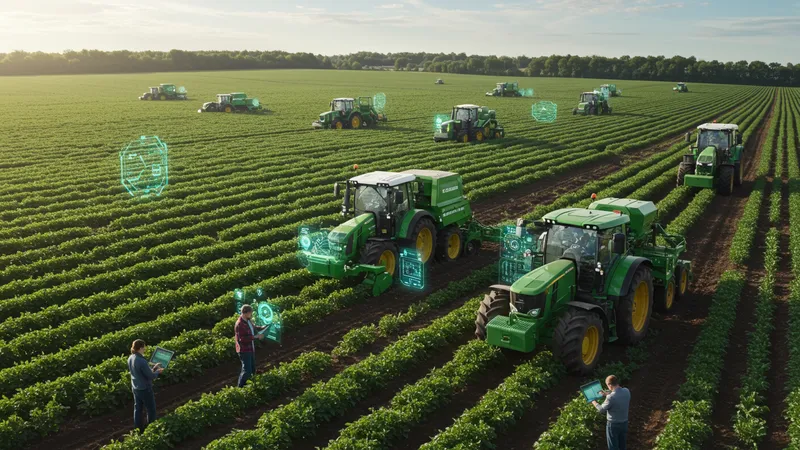
The biggest breakthrough lies in machine learning algorithms that predict and mitigate potential problems before they occur. Such proactive strategies are turning ordinary farmers into data-savvy agronomists, who can prevent losses and enhance outputs. Yet, the impact on the farmer’s daily activities is profound, from reduced labor to increased income stability. The real question is, how will this reshape agricultural societies? That’s the next revelation waiting to be uncovered.
But there’s one more twist—this technology isn’t just for large-scale operations. Smallholder farmers are finding these same tools accessible, thanks to government incentives and cooperative models. By pooling resources, even those with limited funds can afford cutting-edge solutions, leveling the playing field in unexpected ways. This shift could redefine rural economies as we know them.
What you read next might change how you see farming forever, as we dig into the social implications of these innovations. From changing the rural labor market to influencing global food policies, the terrain of agriculture is being reshaped far beyond the fields.
Smart tractors are not your average piece of farming equipment. These technological marvels are equipped with GPS technology, allowing them to navigate fields with unprecedented accuracy. Farmers can program these tractors to perform repetitive tasks, cutting down on labor costs and boosting efficiency. What’s phenomenal is the level of detail involved; even the smallest sections of land can be precisely managed. This minimizes resource wastage—a critical need in today’s climate-aware world.
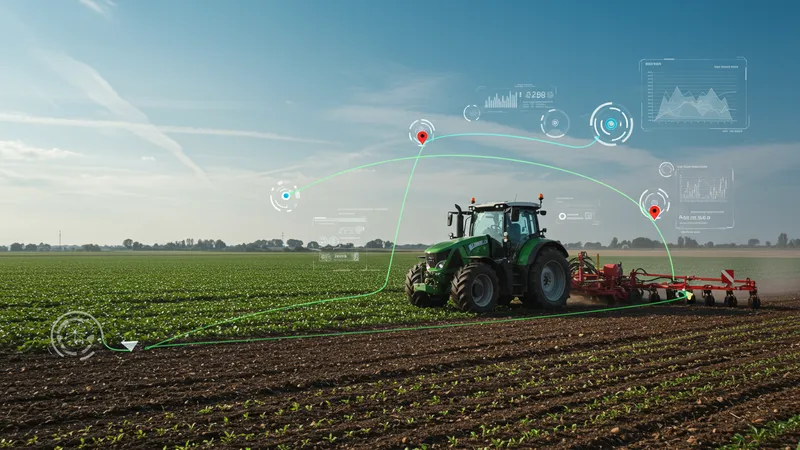
What makes these machines truly revolutionary, however, is their ability to offer real-time analytics. By continuously monitoring and analyzing the conditions of the crops and soil, farmers receive data that supports rapid decision-making. This tech has bridged the gap between science and farming, enabling a smarter approach to agriculture that maximizes every square inch of land. But what about the impact beyond the fields?
The ripple effect of smart tractors extends into the economic realm. With increased productivity, farmers can maintain competitive pricing while expanding their operations. Not to mention, the demand for tech-savvy farmhands has created new job opportunities, transforming rural job markets. However, as this automated future unfolds, manual labor roles face existential risks. So how does one navigate this delicate balance between progress and people?
The next chapter dives into the controversial topic of automation and employment in agriculture. What are the hidden costs associated with these advances, and who stands to benefit the most? Prepare to question what you thought you knew about the agricultural workforce.
Autonomous harvesters are redefining efficiency by drastically reducing the time and manpower needed to bring crops in from the fields. These machines can perform complex tasks such as picking, sorting, and winnowing, all without human intervention. While the upfront costs are substantial, the return on investment is undeniable—higher yields and lower labor costs. But here's the real surprise: these harvesters are programmed to handle different types of crops simultaneously, making them versatile enough for diverse farming operations.
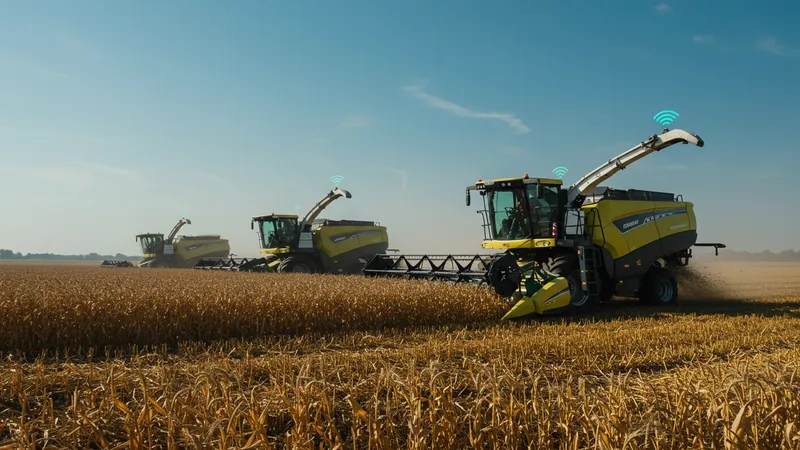
This type of machinery isn’t just about labor replacement; it’s about creating a smarter ecosystem. With the capacity to collect and analyze data, these harvesters can provide insights that help optimize the planting and growing processes for future cycles. This creates a sustainable loop of continuous improvement. The trick lies in how these machines are integrated into existing farming frameworks. It’s not a question of if but when smaller farms will adopt autonomous harvesters.
Yet, not all reactions are positive. Concerns about redundancy and the loss of traditional skills loom large. Can human labor truly coexist with machines in the long run? And what role does training play in this evolving landscape? These harvesters are at the epicenter of a hotly debated topic about the future role of humans in farming. Traditional farming communities face the daunting task of adapting to this techno-centric era.
The next breakthrough awaits as we delve into the societal impact of these advancements. Discover how communities adjust and whether the current pace of change is sustainable. What societal frameworks need reevaluation to accommodate these transformations? The answers are more enlightening than you’d imagine.
Precision farming promises to revolutionize the agricultural landscape, offering pinpoint accuracy in all farming activities from sowing to harvesting. Yet, is it as advantageous as it seems? The heart of this approach lies in its nuanced use of real-time data—weather patterns, crop health, and market demand are all taken into account for optimum decision-making. While the benefits are clear, there are complexities under the surface that aren’t immediately apparent to the casual observer.

The technology claims to reduce input costs and enhance crop quality, but it comes with a learning curve that can be prohibitive for some farmers. Training and initial setup costs can deter those who aren’t already inclined toward tech-driven solutions. This barrier to entry is a significant issue that remains largely unaddressed in ongoing policy discussions. However, once past the initial hurdles, farmers report significant savings in resources like water, fertilizers, and pesticides, leading to more sustainable agriculture.
Even the environment stands to gain from precision farming. By minimizing resource waste, this technology contributes to reduced emissions and lesser environmental degradation. Yet the question remains: Is this sustainable farming’s silver bullet? The debate continues, as stakeholders weigh the tangible benefits against the environmental footprint of producing and maintaining this advanced machinery.
As we explore deeper into this topic, consider the broader impact of precision farming on food security. Will this technology truly help feed a growing population, or are there hidden pitfalls waiting just out of sight? What you learn next might redefine your understanding of farming’s role in our world.
Agricultural technology is reshaping rural communities in ways that go beyond machinery. Social structures and job distributions are evolving fast, thanks to the influx of high-tech tools. Families that have farmed for generations find themselves making decisions not only about crops but also about data analysis. New training programs are sprouting to arm the next generation with skills relevant to this tech-driven reality.
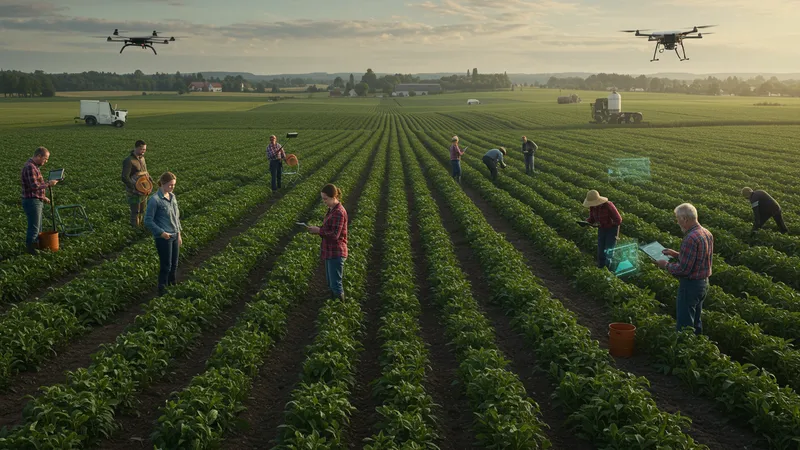
However, not all changes are favorable. Traditional forms of knowledge and skill are at risk of being overshadowed by technology. The cultural implications are profound, as older and younger generations grapple with this shift. For some, it’s an exciting leap forward, but for others, it’s a detachment from long-standing practices. The challenge lies in integrating legacy skills with new technologies without losing essence or efficiency.
Moreover, farmers are becoming entrepreneurs in their own right, diversifying their roles to adapt to the demands of modern agriculture. Community economies are shifting from being crop-centric to tech-centric, a change that provides more stability but also presents new pressures. As the farming community evolves, so do the challenges and opportunities afforded to them.
What will it take for these communities to thrive amidst technological upheaval? As we delve deeper, explore how rural life is negotiating this complex intersection of tradition and technology. From educational initiatives to technological adaptations, the solutions being proposed are as intriguing as they are diverse.
Modern farming is not just about crops; it’s rapidly becoming a lucrative business domain, with global agriculture contributing trillions to the economy. With technological advances driving efficiency and output, farming families have shifted from subsistence agriculture to commercially viable enterprises. This has introduced a dynamic where investment in the latest technology equates to higher profitability, fundamentally altering the economic landscape of rural regions.
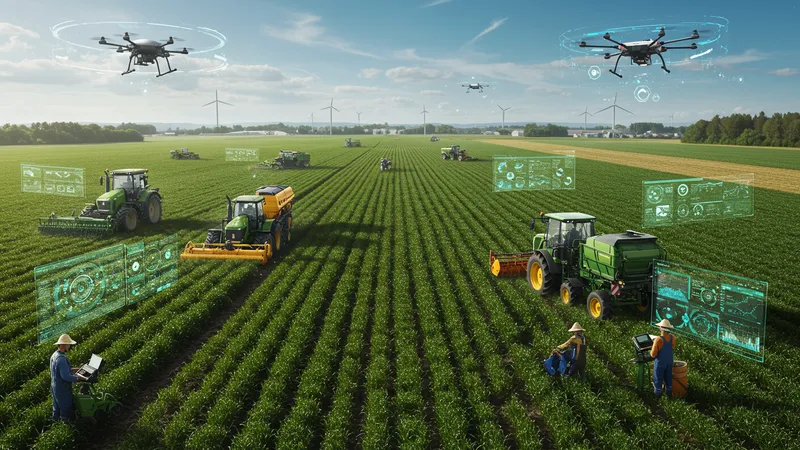
The adoption of high-tech machinery is financially incentivized by governmental and international grants, designed to promote sustainable agricultural practices. But as funding opportunities expand, the competitive pressure intensifies, compelling farmers to stay on the cutting edge. This economic model presents both risks and opportunities, as the need for substantial upfront investment can be a barrier to entry for some, while a boon for others prepared to capitalize.
Many farmers are capitalizing on the global demand for organic and locally-produced goods by incorporating precision farming techniques to certify their crops as organic. This allows farmers to market their products at premium prices, thereby enhancing profitability. However, navigating these market dynamics requires clear strategy and foresight; those unwilling to adapt risk being left behind.
The next phase of exploration turns the spotlight on the socioeconomic implications of these changes. Are traditional farming practices doomed to become obsolete, or is there room for a hybrid model that combines the best of both worlds? The revelations waiting in the next section are sure to challenge preconceived notions of what it means to be a farmer in today’s world.
The climate-smart approach to farming aims to align agricultural practices with environmental stewardship, positioning itself as a crucial strategy in combating climate change. Central to this concept is the integration of sustainable practices with cutting-edge technology, from water conservation techniques to emissions reduction strategies. Automation lies at the heart of this transformation, optimizing resources while minimizing environmental impact.
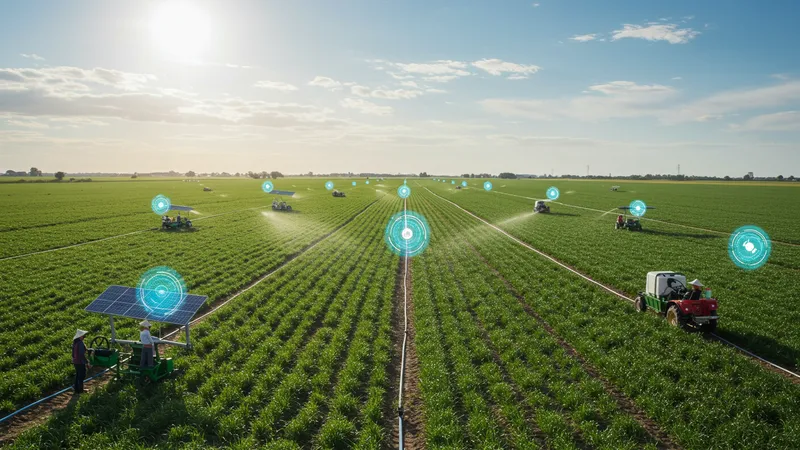
Implementing climate-smart farming requires farmers to rethink the entire agricultural process. Solutions like drip irrigation and solar-powered machinery highlight the intersection of technology and eco-friendly practices. This shift not only serves sustainability goals but also lowers long-term costs, firmly positioning climate-smart farming as a viable, attractive option.
Even so, the transition is fraught with challenges. The initial cost of switching to climate-smart methods can be prohibitive without appropriate financial support. Moreover, the rapid pace of technological advancement suggests that today’s state-of-the-art solutions may become tomorrow’s outdated models. How can farmers maintain relevancy in this fast-evolving environment without compromising on their environmental commitments?
The narrative unfolds further as we examine the partnerships emerging to support this shift. Global collaborations between governments, NGOs, and private enterprises are leading the charge, providing the necessary framework to make climate-smart farming a widespread reality. As we explore these alliances, the potential for transformative change becomes evident.
Drones are revolutionizing agriculture by offering a bird’s eye view of what's happening on the ground. These aerial tools enable farmers to assess the health of their crops and the efficiency of their irrigation systems with unprecedented accuracy. The ability to quickly gather actionable data allows for more strategic planning and quick decision-making, translating into tangible results on the ground.
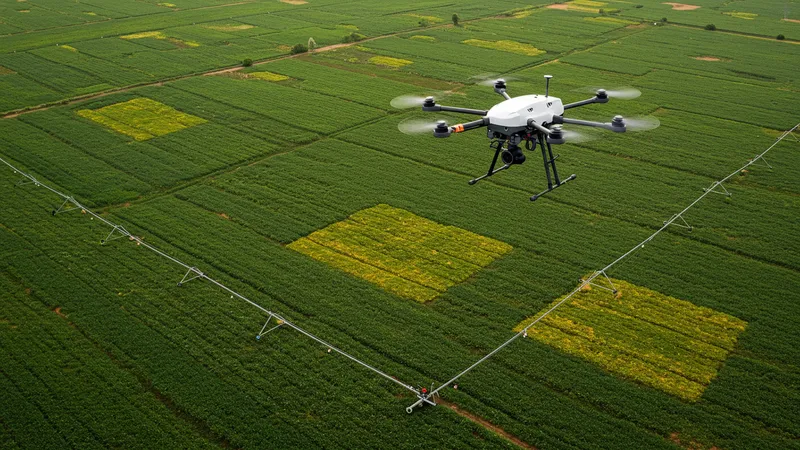
The use of drones is becoming a standard practice in field scouting, as they minimize time, labor, and cost. Yet, it's the advances in drone technology that are pushing the envelope even further. With thermal imaging capabilities and advanced sensors, drones can identify crop issues that are invisible to the naked eye. The ability to diagnose potential problems quickly can mean the difference between a successful harvest and a failed crop.
While the benefits are unmistakable, the implementation of drones comes with its own set of challenges. Regulatory hurdles and the necessity for skilled operators add layers of complexity that some farmers might find intimidating. Nevertheless, with the right training, farmers can turn this technology into a powerful ally, enhancing productivity while reducing overreliance on manual labor.
As we unpack these developments, the potential of drone technology to reshape modern farming becomes evident. The next section tackles the synergy between drones and other agricultural technologies, painting a vivid picture of the future landscape of farming. Prepare to see the skies and fields of farming in a whole new light.
The integration of the Internet of Things (IoT) in agriculture is setting new heights for efficiency and sustainability. With IoT, every element of farming—from irrigation systems to livestock management—is interconnected, allowing farmers to monitor all aspects of their operations from a single device. This kind of hyperconnectivity is aimed at maximizing efficiency and minimizing waste, making agriculture smarter and more intuitive.
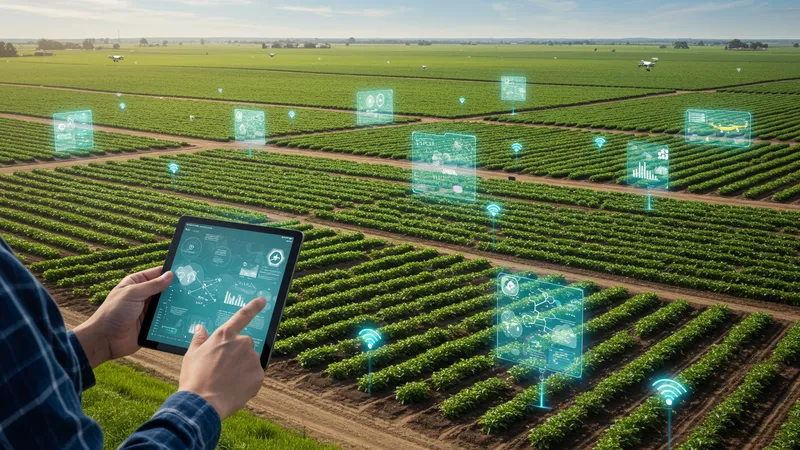
IoT-driven systems utilize sensors placed throughout the farm to provide real-time data on various parameters such as soil moisture, weather conditions, and equipment health. The key advantage lies in the system’s ability to automate responses to these parameters, ensuring that actions like watering or nutrient application are timely and precise, enhancing crop yield and quality.
Yet, the road to full IoT integration is fraught with hurdles. The technical complexity of setting up an IoT-based system can be daunting, especially for small-scale farmers. Additionally, data security remains a critical concern, as the mishandling of sensitive farm data could lead to detrimental consequences. The role of policy in ensuring the safe and equitable deployment of these systems cannot be understated.
What’s next in the pipeline for IoT in agriculture? The potential for this technology to integrate with AI and machine learning paves the way for more autonomous and efficient farming systems. This blending of technologies raises essential questions about the future of farming and the competencies needed to thrive in this evolving field. The upcoming sections will delve into these predictions and uncover strategies for a seamless transition.
Robotics is emerging as the next frontier in agriculture, introducing an era where machines perform tasks with sophistication and precision previously unheard of. Robots are being developed for activities such as planting, watering, and even weeding, enabling farms to run with minimal human intervention. The question is not just about replacing human labor but about enhancing it by handling repetitive tasks more efficiently.
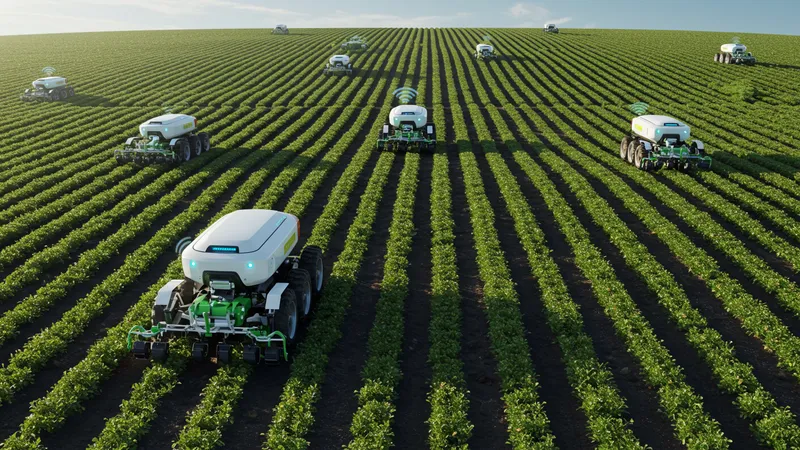
The robots designed for agricultural purposes are equipped with sensors and advanced programming, allowing them to adapt to changing conditions and make informed decisions independently. As these machines take on more complex roles, they free up human workers to focus on strategic planning and oversight, leading to smarter resource allocation and improved productivity.
Nevertheless, integrating robotics into farming operations poses considerable challenges. The cost of acquiring and maintaining these robots is high, requiring significant initial capital. Furthermore, the transition from human to robotic labor has potential social consequences that need careful navigation. Training and re-skilling programs will be essential to ensure that the workforce is not left behind in this robotic revolution.
As we continue this journey, we examine how robotics is not just complementing but also reshaping the very fabric of agriculture. The forthcoming discussion will tackle the transformative role of robotics in farming, casting a light on how it’s enabling unprecedented agility and resilience in the agricultural sector. What we unearth could profoundly influence your perspective on farming’s future landscape.
Renewable energy is fast becoming a staple in agricultural machinery, driven by the need for environmentally friendly practices and cost efficiency. From solar-powered tractors to biofuel systems, these innovations offer significant energy savings while reducing the carbon footprint of farming operations. The embrace of renewable energy sources is indicative of a larger shift toward sustainable agriculture, one that aims to balance productivity with ecological stewardship.
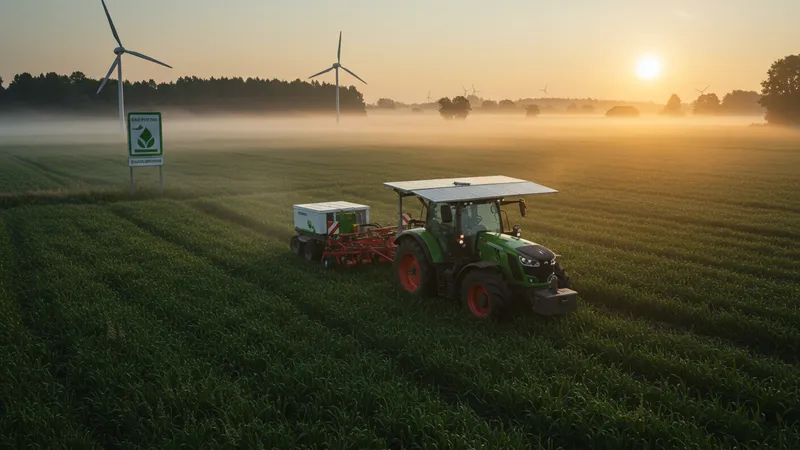
The advantages of using renewable energy in agriculture extend beyond environmental benefits. Long-term cost savings associated with using solar and wind power make these technologies appealing. However, the initial investment and ongoing maintenance costs are challenging obstacles to widespread adoption. This financial dilemma is often mitigated by government incentives and subsidies aimed at promoting green practices within the industry.
Adopting renewable energy also aligns agricultural practices with global sustainability goals, positioning farms as key players in the fight against climate change. However, the transition is not without its complications. The need for reliable technology and the intermittent nature of renewable resources pose questions about the future resilience of these energy-dependent agricultural systems.
The landscape of agricultural machinery is evolving at a breakneck pace, and understanding how renewable energy fits into this picture is crucial. As we delve into this topic further, we will uncover the symbiotic relationship between sustainability and economic viability. With many twists and turns to explore, the next sections promise to unravel the intricate web of renewable energy in agriculture.
Big data is revolutionizing modern farming, proving to be a game changer in every sense. By collecting and analyzing vast amounts of data—from soil conditions to weather forecasts—farmers can make decisions with a level of accuracy and speed that was previously impossible. This data-driven approach helps in maximizing yield while reducing waste, transforming agriculture into a more efficient and predictable industry.
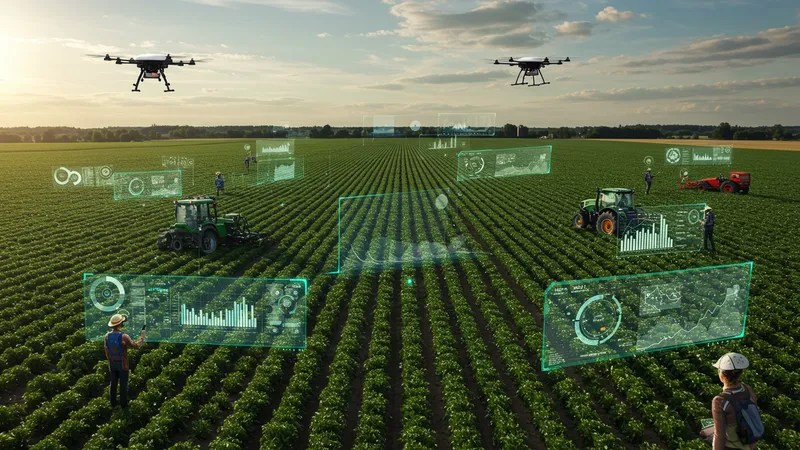
The insights derived from big data enable personalized farming solutions, optimizing resource use and producing higher-quality crops. Advanced analytics also facilitate proactive management, identifying potential issues before they escalate into problems. This predictive capability helps farmers stay ahead of challenges, making the farming process smoother and less stressful.
The integration of big data with other technologies, such as IoT and AI, presents immense opportunities for enhancing farm operations. But it also raises concerns about data privacy and the digital divide. While advanced farms benefit significantly from big data, smaller farms may struggle to keep up, widening the gap between different scales of farming operations.
As we delve deeper into the realm of big data, the scale of its impact becomes clear. The implications stretch beyond just improved farm management; they affect everything from supply chain logistics to global food security policies. The next discussions offer an in-depth look at how big data is changing the face of agriculture and what it implies for the future.
The digital transformation of agriculture brings with it an often overlooked challenge: cybersecurity. As farms become increasingly reliant on technology, the vulnerability to cyber threats grows. Ensuring the security of digital farming systems is not just about protecting data but also essential for safeguarding entire farm operations from potential disruptions.
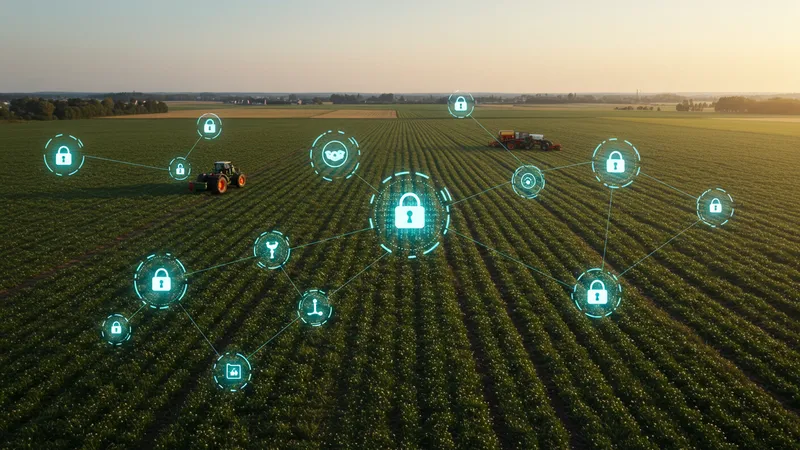
Hackers targeting farm management systems can cause severe disruptions, from halting machinery operations to altering important agricultural data. The risks make it imperative for farmers to adopt robust cybersecurity measures. This includes regular updates, secured communication channels, and employee training to recognize potential threats.
However, many farmers are unprepared for the growing cyber risks associated with smart farming technologies. The lack of awareness and expertise in cybersecurity makes farms attractive targets for cybercriminals. Bridging this knowledge gap is essential for maintaining the integrity of digital agricultural systems.
As we explore further, the focus shifts to practical steps that farmers can take to bolster their cybersecurity defenses. Understanding these risks and implementing preventive measures is key to maintaining not just operational efficiency but also the economic stability of farms in this digital age. The lessons waiting for you in the next sections are critical for any farmer navigating the cyber frontier.
Policy plays a critical role in shaping the future of agricultural technology, acting as both a facilitator and a regulator of innovation. Governments and international bodies are creating frameworks aimed at promoting sustainable practices while encouraging technological advancements in farming. However, navigating this complex policy landscape requires a keen understanding of both local and global regulations.
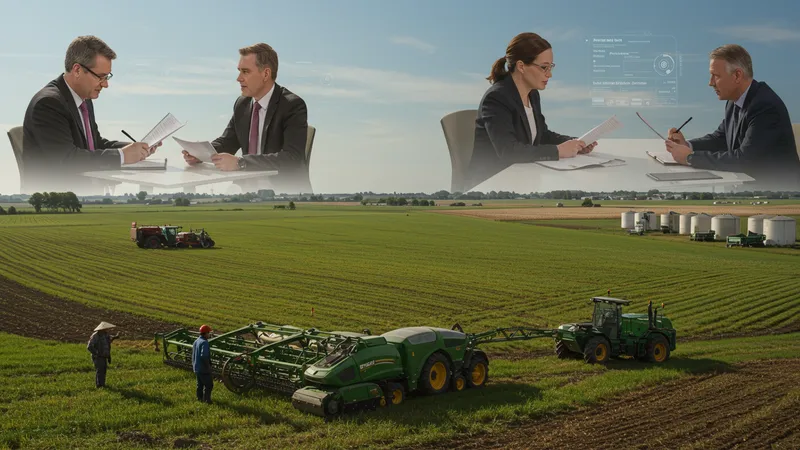
Subsidies and grants are avenues through which policies support technology adoption in agriculture, particularly for smaller farms that struggle with initial investment costs. These incentives are designed to democratize access to cutting-edge tools, leveling the playing field. Yet, the distribution of these benefits is sometimes uneven, sparking debates about fair access and equity in agricultural progress.
Moreover, policy frameworks are evolving to accommodate the rapid technological changes in agriculture. This includes regulatory aspects of drone usage, data privacy concerns, and environmental protections. Policymakers face the challenging task of balancing innovation with the need for ethical and sustainable farming practices.
The exploration ahead examines how policy decisions are influencing the pace and direction of technological advancements in agriculture. By understanding these dynamics, farmers can better position themselves to capitalize on opportunities while navigating potential pitfalls. The insights awaiting you are poised to alter your perspective on how agriculture intersects with policy, technology, and sustainable development.
In the ever-evolving world of agriculture, staying ahead means embracing the changes brought on by revolutionary machinery and technological innovations. The advent of autonomous equipment, precision farming, and holistic ecosystem management is setting new standards—but it's just the tip of the iceberg. As farms transform into tech-centric operations, they redefine the scope and scale of agriculture.
The takeaways from this exploration aren’t just about technological triumphs. They also highlight the need for adaptability, education, and collaboration across stakeholders to harness these advancements effectively. So, whether you're a farmer, policymaker, or tech enthusiast, there’s a call to action here: share this knowledge, advocate for intelligent policies, and prepare to embrace an agriculturally advanced future poised to feed the world sustainably.